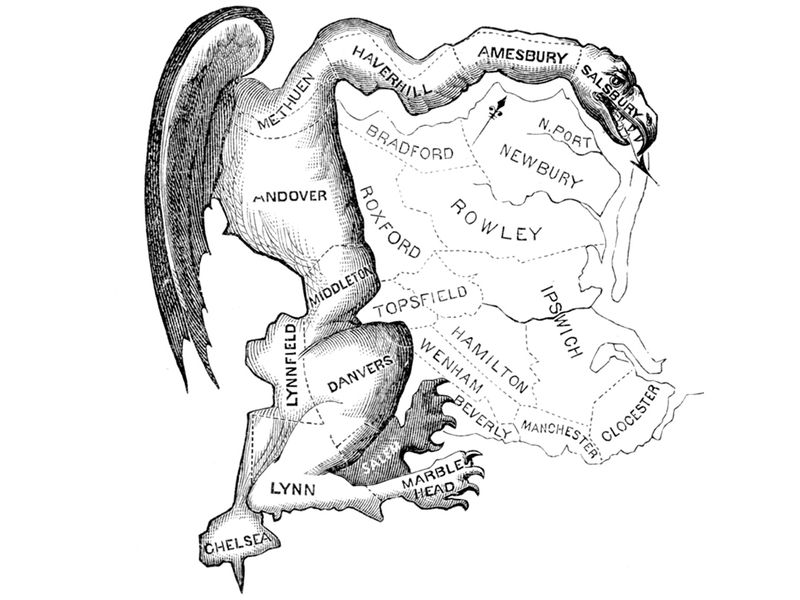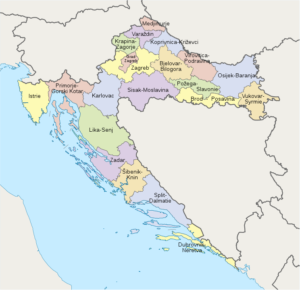
by Mirta Jurilj
Following the dissolution of Yugoslavia, the main part of which proceeded in several stages from 1980 to 1992,[1] the newly minted independent countries were granted the opportunity to try their hands at democracy.
The year 1992 saw the first parliamentary elections in Croatia, which were held in the approximate form as they still are today—i.e., citizens voted to fill the seats of around 150 representatives or deputies to serve in a unicameral parliament, the so-called Sabor. These seats would be re-filled every four years by direct popular vote. The aforementioned number of representatives is the first burning issue regarding the Croatian political system; specifically, for a country that is roughly the size of New York State and whose total population is estimated at just over 4 million, the figure is a tad too high,[2] leaving plenty of room for (or perhaps occasioning) manipulation and corruption.
Even though the country is divided into 20+1 reasonably sized counties (Fig. 1), it has been further subdivided into 428 municipalities (Fig. 2) in order to accommodate the ever-growing body of dysfunctional, if not adversarial public administrators.
Fig. 1: Counties of Croatia (source: Wikimedia Commons). Note the existence of Zagreb County and the fact that the capital City of Zagreb (Grad Zagreb) is a separate unit (the above-mentioned +1).
Fig. 2: Municipalities of Croatia (source: Wikimedia Commons, author: Tezwoo, CC BY-SA 4.0). The Municipality of Dekanovec in Međimurje County (north Croatia) is the smallest by territory, with a total area of only 2.35 square miles! Civljane, the smallest municipality by population (Šibenik-Knin County, south Croatia), boasts a total of 239 inhabitants.
Croatian parliamentary elections have remained relatively uneventful and their results annoyingly consistent since their first installment on April 22, 1990, with the Croatian Democratic Union (HDZ) winning all but two mandates thus far. This ‘nation-forming’ right-wing party has practically established itself as the only viable option, thus annihilating the entire concept of plural democracy and the multi-party system. This may be due to the fact that the most powerful opposition party, the Social Democratic Party (SDP), is too disorganized internally and is currently facing its umpteenth crisis, or because the HDZ ensured its status from the very beginning by employing several methods, one of which is gerrymandering (Fig. 3).
Fig. 3: Electoral districts of Croatia (source: Wikimedia Commons, author: Daniel Nikolić, CC BY-SA 4.0).
Parts of Croatia are divided according to the prevailing political views and mindsets of its inhabitants and are (artificially) fused together with their nearest geographical counterparts in terms of ideology. For example, the City of Zagreb, with its 247 square miles, is dissected into no fewer than four pieces (i.e., districts 1, 2, 6, and 7)! The traditionally left-wing and more progressive Istria County (Croatia’s northwestern-most county), and Primorje-Gorski Kotar County (to its immediate east and south), are divided and tailored so as to somewhat mitigate ‘unfavorable’ election results; the former is blended together with the latter’s insular territory (traditionally less progressive due to relative isolation), while its continental area is combined with Croatia’s northward region (leaning towards the center). That way, the election results—which may not be in favor of the HDZ if a given district corresponded to a county—are effectively ‘watered down.’
Districts 11 and 12 are reserved for the Diaspora and the Minorities, respectively. Alongside voting for ‘regular’ representatives, members of minority groups in Croatia also have the right to vote for a total of eight deputies who directly represent their interests.[3] Miraculously, this may be the only well-conceived and fair feature of the system.
On the other hand, the Diaspora District is not a physical/geographical entity and is primarily intended for the accumulation of extra votes for the HDZ from those who neither live nor pay taxes in Croatia but have dual citizenship and receive financial support and other benefits when said party is in power. This brilliant idea was born from the fact that there are as many Croats living in the country as there are abroad. Apart from economic migrants, many of these second- and even third-generation expats emigrated for political reasons after the Second World War, i.e., following the debacle that was the Independent State of Croatia (a puppet state of Nazi Germany and Fascist Italy) and the forming of the Federal People’s Republic of Yugoslavia. As such, they represent a substantial voting body for the HDZ. Many of them have never set foot in Croatia—unlike the Bosnian Catholic minority, who like to be called Croats even though they were born and live in the neighboring country of Bosnia and Herzegovina. They, too, stubbornly vote for the HDZ both as a diaspora and as regular citizens (yes, twice), while said Party returns the favor by abundantly financing their hospitals, churches, public service and other ‘relevant’ instances. For the sake of comparison, e.g., hospitals in Croatia are more or less in a state of decay. We can safely say that Bosnian ‘Croats’ make up a separate metaphysical district.
The official explanation for this division of the Croatian territory is that “each district holds roughly the same amount of registered voters, around 400,000,”[4] which is reminiscent of the Electoral College system in the United States, albeit executed in a different manner. However, even a slight insight into the demographic and ideological structure of Croatia’s electoral districts causes this justification to quickly fall apart, revealing yet another blatant instance of gerrymandering for the sake of a one-party political system operating under the pretense of pluralism.
[1] https://en.wikipedia.org/wiki/Timeline_of_the_breakup_of_Yugoslavia
[2] Compared to the 435 seats in the US House of Representatives (approximately 760,000 people per representative), each representative in Croatia’s Sabor stands for around 26,000 citizens.
[3] https://www.sabor.hr/en/mps/national-minorities-mps
[4] https://en.wikipedia.org/wiki/Croatian_Parliament_electoral_districts




